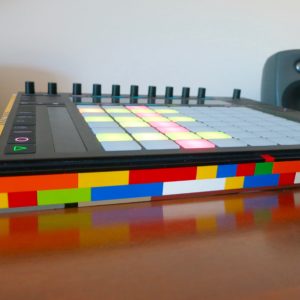This page provides an overview of past and ongoing works, roughly in reverse chronological order (latest first), and otherwise widely mixed, independent of field, topic and work type.
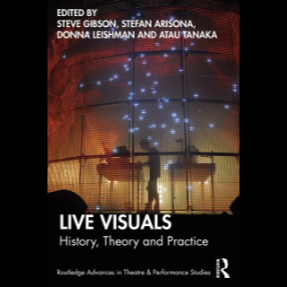
Book: Live Visuals – History, Theory, Practice
This volume surveys the key histories, theories and practice of artists, musicians, filmmakers, designers, architects and technologists that have worked and continue to work with visual material in real time.
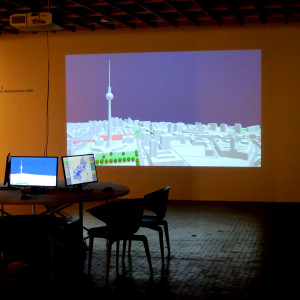
Enabling DEMO:POLIS
“Enabling DEMO:POLIS” is a participatory urban planning installation, presented as part of the DEMO:POLIS exhibition at Akademie der Künste in Berlin. The installation engages the public in the design of open space through an interactive software application.
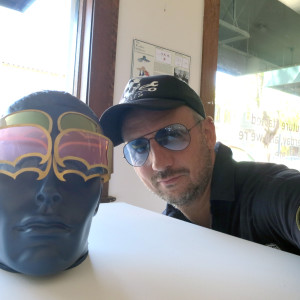
The Wild Jewels
The Wild Jewels explore the possibilities of data-driven wearable technology that responds to future environmental scenarios.

Visualizing Waypoints-Constrained Origin-Destination Patterns for Massive Transportation Data (CGF)
In this paper we propose waypoints-constrained OD (origin-destination) visual analytics, a new approach for exploring path-related OD patterns in an urban transportation network.
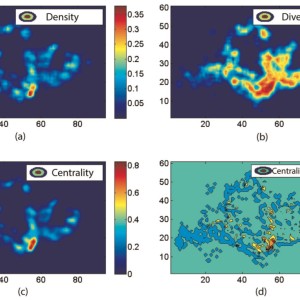
Revealing Centrality in the Spatial Structure of Cities from Human Activity Patterns (Urban Studies)
We propose a new quantitative measure for the centrality of locations, taking into account not only the numbers of people attracted to different locations, but also the diversity of the activities they are engaged in.
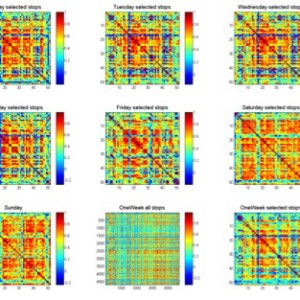
Measuring Variability of Mobility Patterns from Multiday Smart-card Data (JOCS 2015)
In this paper, we present a set of measuring of variability at individual and aggregated levels using multi-day smart-card data.
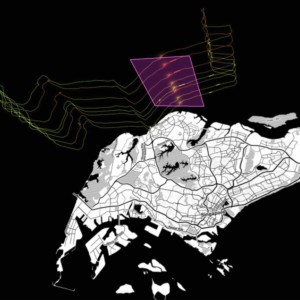
Time–Space Diagram Revisited (TRR 2442)
This paper shows how time-space diagrams remain relevant today, in an era of data abundance.

Visualizing Mobility of Public Transportation System (TVCG/VAST)
Visualizing Mobility of Public Transportation System. To appear in: IEEE Transactions on Visualization and Computer Graphics (TVCG).
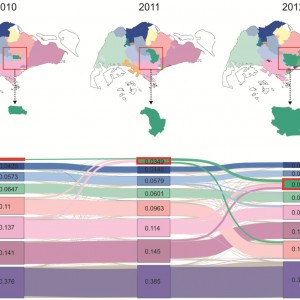
Detecting the Dynamics of Urban Structure Through Spatial Network Analysis (IJGIS 2014)
Detecting the Dynamics of Urban Structure Through Spatial Network Analysis. Chen Zhong, Stefan Müller Arisona, Xianfeng Huang, Michael Batty, Gerhard Schmitt. International Journal of Geographical Information Science. 2014.
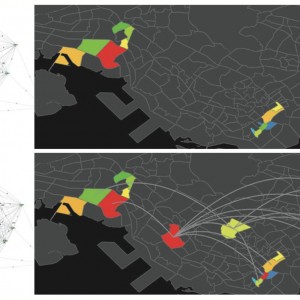
A Visual Analytics Framework for Large Transportation Datasets (CAADRIA 2014)
A Visual Analytics Framework for Large Transportation Datasets. Chen Zhong, Stefan Müller Arisona, Gerhard Schmitt. 19th International Conference on Computer-Aided Architectural Design Research in Asia CAADRIA 2014.
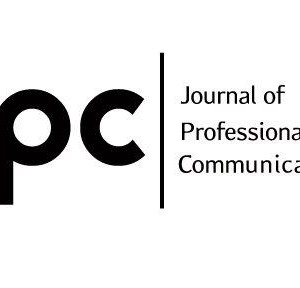
Journal of Professional Communication: “Art/Science Hybrids”
Special issue on the topic of art/science hybrids. Editor in chief: Alex Sévigny. Guest editors: Steve Gibson & Stefan Müller Arisona.
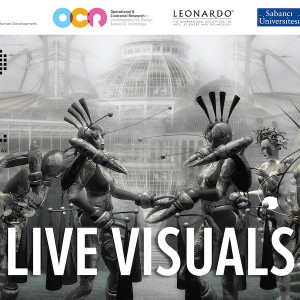
LEA Special Issue on Live Visuals
Leonardo Electronic Almanac (LEA) Special Issue on “Live Visuals for Performance, Gaming, Installation, and Electronic Environments”
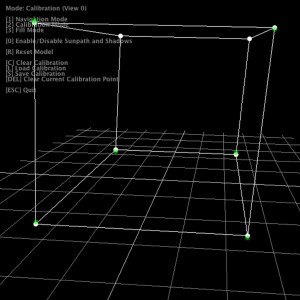
Multi-Projector-Mapper (MPM): Open-Source 3D Projection Mapping Software Framework
The multi-projector-mapper (MPM) is a software framework for 3D projection mapping using multiple projector. It contains a basic rendering infrastructure, and interactive tools for projector calibration.
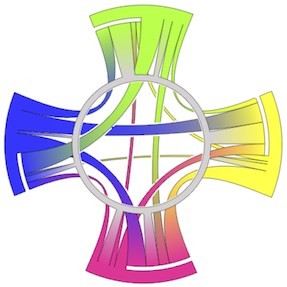
Visualizing Interchange Patterns in Massive Movement Data (EuroVis 2013)
Our paper on “Visualizing Interchange Patterns in Massive Movement Data” was presented at EuroViz 2013 in Leipzig, Germany.
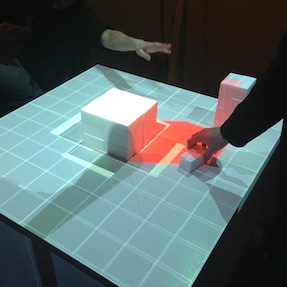
Projections of Reality (smartgeometry’13)
Projections of Reality engages in augmenting design processes involving physical models with real time spatial analysis. The work was initiated at smartgeometry’13 at UCL London in April 2013 and is currently continued at ETH Zurich’s Value Lab Asia in Singapore.
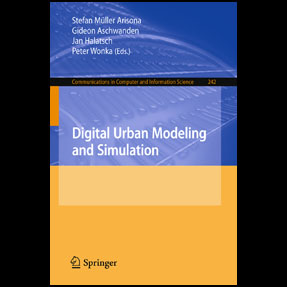
Book: Digital Urban Modeling and Simulation
A book, thematically positioned at the intersections of Urban Design, Architecture, Civil Engineering and Computer Science, with the goal to provide specialists coming from respective fields a multi-angle overview of the state-of-the-art.
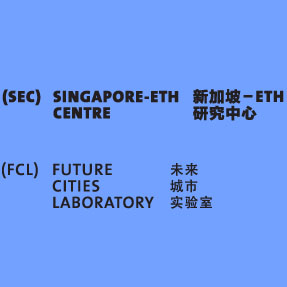
ETH Zurich’s Singapore-ETH Centre and the Future Cities Laboratory
The Singapore-ETH Centre for Global Environmental Sustainability (SEC) in Singapore was established as a collaboration between the National Research Foundation of Singapore and ETH Zurich in 2010. It is an institution that frames a number of research programmes, the first of which is the Future Cities Laboratory (FCL). The SEC strengthens the capacity of Singapore […]
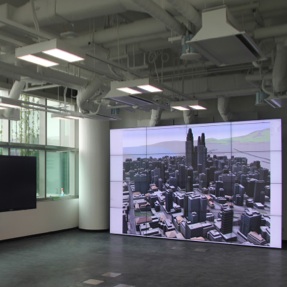
The Value Lab Asia
A collaborative, digitally augmented environment for a wide range of applications, such as participatory urban planning and design, stakeholder communication, information visualisation and discovery, remote teaching and conferencing.

robot_mixeur
…my alter ego when performing as visualist and DJ at clubs and art spaces around the globe.
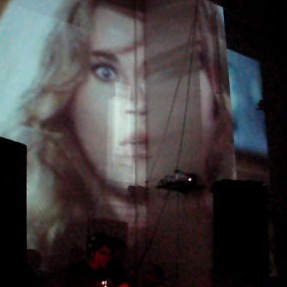
Corebounce & Scheinwerfer
Pascal Müller, Stefan Müller Arisona, Simon Schubiger, Matthias Specht, since 2001 Corebounce is a collective of artists and scientists with the common goal of mediating between arts, science, and technology. We maintain a number of new media projects and our own multimedia software research platform, Soundium. We are organised as a non-profit association and collaborate […]
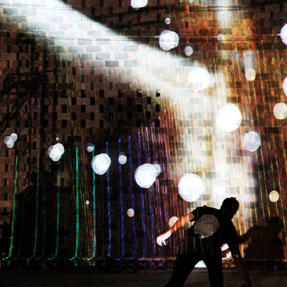
Virtual VJ
Steve Gibson and Stefan Müller Arisona, since 2011 Virtual VJ takes the concept of Virtual DJ one step further and unites the role of the DJ and VJ into one interface: 3D space. The concept of Virtual VJ is to allow two or more users to control different aspects of the sound and video environment […]
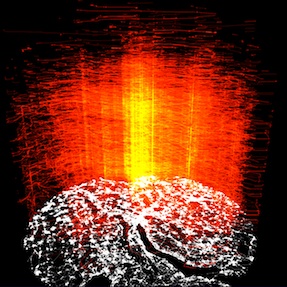
MetroBuzz: Interactive Visualization of Urban Transportation Data
Agent based simulation tools such as MATSim and MITSIM allow us to achieve efficient and accurate predictions of crowd behavior, thereby increasing our understanding of urban systems and assist in urban planning. However, output produced by such simulation platforms are difficult to communicate to stakeholders such as government agencies and the general public due to […]
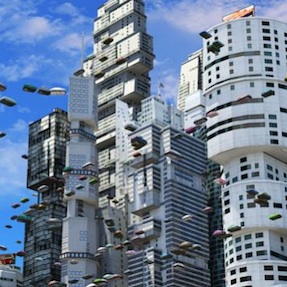
Esri CityEngine – 3D City Modeling for Architecture, Film, and Games
Esri CityEngine, is a 3D modeling software application developed by Esri R&D Center Zurich (formerly Procedural Inc.) and is specialized in the generation of three dimensional urban environments. With the procedural modeling approach, CityEngine enables the efficient creation of detailed large-scale 3D city models with merely a few clicks of the mouse instead of the […]
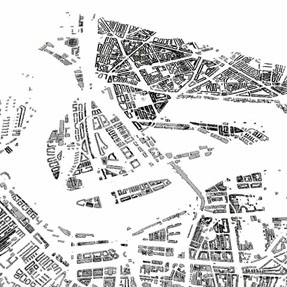
Procedural City – Biometric Cities at Your Fingerprints
Permanent Exhibition Ars Electronica Center, 2009 – 2012 Procedural City is an interactive media installation which has incorporated the generative modeling features of CityEngine along with a biometric fingerprint scanner. It enables the user to create his/her own personal city according to their fingerprint.
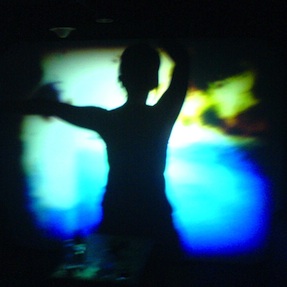
The Exploding, Plastic and Inevitable Redux
Stefan Müller Arisona and Steve Gibson, since 2006 EPI Redux is re-imagining of the psychedelic classic The Exploding Plastic Inevitable, created by Andy Warhol with the Velvet Underground in the late 1960s. Rather than literally interpreting the original Warhol event, EPI Redux seeks to update psychedelia for the new millennium. Using an excess of technology […]
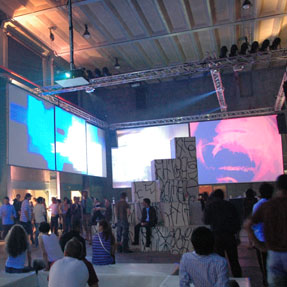
ETH Zurich’s Digital Art Weeks
I am co-founder and scientific director of ETH Zurich’s Digital Art Weeks. The Digital Art Weeks, an annually recurring festival, are concerned with the application of digital technology in the arts. Consisting of a symposium, workshops and performances, the program offers insight into current research and innovations in art and technology as well as illustrating […]
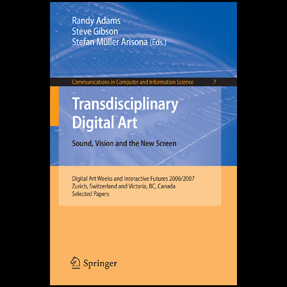
Book: Transdisciplinary Digital Art
The work represented in this book is a confirmation of the vitality and breadth of the digital arts. Collecting essays that broadly encompass the digital arts, the book gives a clear overview of the on-going strength of scientific, philosophical, aesthetic and artistic research that makes digital art perhaps the defining medium of the 21st Century.
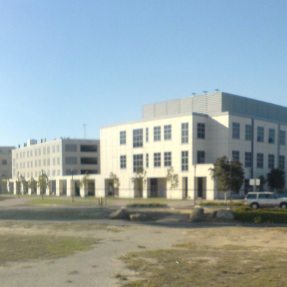
Computer-assisted Media Authoring Techniques
Stefan Müller Arisona, research fellowship at UCSB, 2007 – 2008 Project Summary The volume of digital media content has enormously grown in the recent years: Emerging internet-based applications, such as YouTube or MySpace, are media-rich, emphasise on content sharing, and attract huge communities. As the volume of content further expands, we see an increasing need […]

The Allosphere Research Facility
I was working on the Allosphere project during my stay at UCSB. Mostly in terms of experimenting with projection warping in a full-dome environment, and with bringing in content, especially through the Soundium platform.
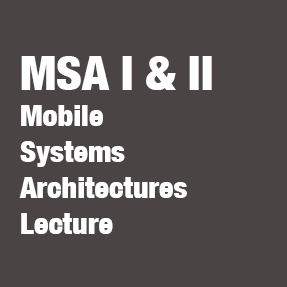
Mobile Systems Architectures Lecture
The lecture “Mobile Systems Architectures 1 & 2”, taught at the Computer Systems Institute of ETH Zurich in 2006 and 2007, was realised in collaboration with Swisscom, and took an integral approach to mobile computing from a “systems view”. The course was targeted at master programme students with an interest in mobile applications and systems […]
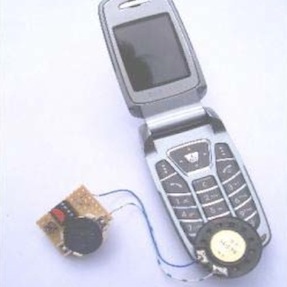
SQEAK – Real-time Multiuser Interaction Using Cellphones
This research project explored one approach to providing mobile phone users with a simple low cost real-time user interface allowing them to control highly interactive public space applications involving a single user or a large number of simultaneous users.
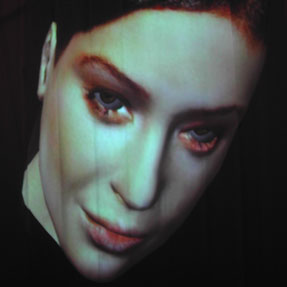
The Digital Marionette
The interactive installation Digital Marionette impressively shows the audience the look and feel of a puppet in the multimedia era: The nicely dressed wooden marionette is replaced by a Lara Croft – like character; the traditional strings attached to puppet control handles emerge into a network of computer cables. The installation is currently exhibited at […]
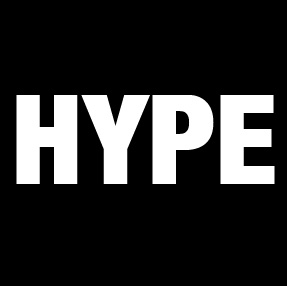
In 15 Minutes Everybody Will Be Famous
I recently (2012) stepped across this submission again, and was surprised and also feeling a bit depressed that we never fully realised this piece at that time – this was before facebook & co took off, see “the next hype” box in the picture below. Anyway, the concept is still here, and I believe the […]
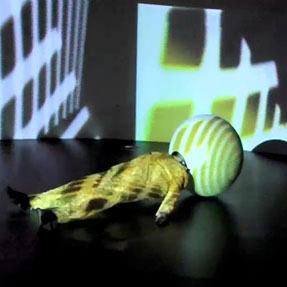
Almost Lost With Heinrich Lüber
Corebounce, in collaboration with Heinrich Lüber and Art Clay, 2006 “Almost Lost” was a performative audio-visual installation of Corebounce in collaboration with artists Art Clay and Heinrich Lüber: Streams of spoken words are deformed by interactive technology.
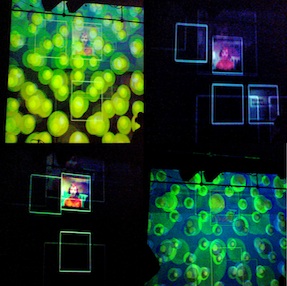
Rip My Disk
Corebounce Art Collective, 2006 The project “Rip my Disk”, presented at Interactive Futures 2006, brought mobile art to the dancefloor. It compromised privacy by displaying personal content to the big screen.
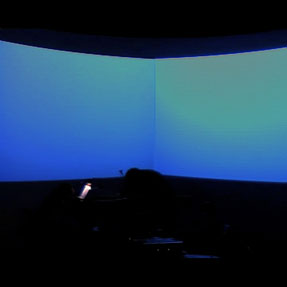
Surréance – A River and Five Bridges
Corebounce, in collaboration with Art Clay and Anne Faulborn, 2005 This radical, eye-and earblasting performance was realised in collaboration with Art Clay (Composition) and Anne Faulborn (Cembalo). Art Clay’s composition “A River and Five Bridges” is an electronic adaptation of André Bretons “Barrières” and asserts the affinity of rational and irrational.

Pianist’s Hands – Synthesis of Musical Gestures
PhD Thesis – Stefan Müller Arisona, 2004 The process of music performance has been the same for many centuries: a work was perceived by the listening audience at the same time it was performed by one or a group of performers. The performance was not only characterised by its audible result, but also by the […]
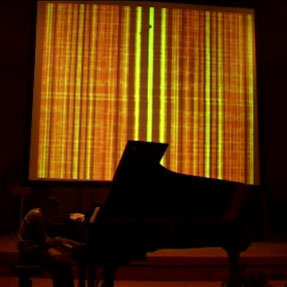
The Pianist’s Brainwaves
Guerino Mazzola & Corebounce, 2002 Free jazz improvisation by Guerino Mazzola over a motif of Modest Mussorgsky’s “Pictures at an Exhibition” accompanied by an expressive live visuals interpretation. Instead of using DSP music analysis, the piece employed real-time EEG (Electroencephalogram) to sense and analyse Mazzola’s brainwaves. The retrieved parameters were then mapped to for spatial […]

Book: Live Visuals – History, Theory, Practice
This volume surveys the key histories, theories and practice of artists, musicians, filmmakers, designers, architects and technologists that have worked and continue to work with visual material in real time.

Enabling DEMO:POLIS
“Enabling DEMO:POLIS” is a participatory urban planning installation, presented as part of the DEMO:POLIS exhibition at Akademie der Künste in Berlin. The installation engages the public in the design of open space through an interactive software application.

The Wild Jewels
The Wild Jewels explore the possibilities of data-driven wearable technology that responds to future environmental scenarios.

Visualizing Waypoints-Constrained Origin-Destination Patterns for Massive Transportation Data (CGF)
In this paper we propose waypoints-constrained OD (origin-destination) visual analytics, a new approach for exploring path-related OD patterns in an urban transportation network.

Revealing Centrality in the Spatial Structure of Cities from Human Activity Patterns (Urban Studies)
We propose a new quantitative measure for the centrality of locations, taking into account not only the numbers of people attracted to different locations, but also the diversity of the activities they are engaged in.

Measuring Variability of Mobility Patterns from Multiday Smart-card Data (JOCS 2015)
In this paper, we present a set of measuring of variability at individual and aggregated levels using multi-day smart-card data.

Time–Space Diagram Revisited (TRR 2442)
This paper shows how time-space diagrams remain relevant today, in an era of data abundance.

Visualizing Mobility of Public Transportation System (TVCG/VAST)
Visualizing Mobility of Public Transportation System. To appear in: IEEE Transactions on Visualization and Computer Graphics (TVCG).

Detecting the Dynamics of Urban Structure Through Spatial Network Analysis (IJGIS 2014)
Detecting the Dynamics of Urban Structure Through Spatial Network Analysis. Chen Zhong, Stefan Müller Arisona, Xianfeng Huang, Michael Batty, Gerhard Schmitt. International Journal of Geographical Information Science. 2014.

A Visual Analytics Framework for Large Transportation Datasets (CAADRIA 2014)
A Visual Analytics Framework for Large Transportation Datasets. Chen Zhong, Stefan Müller Arisona, Gerhard Schmitt. 19th International Conference on Computer-Aided Architectural Design Research in Asia CAADRIA 2014.

Journal of Professional Communication: “Art/Science Hybrids”
Special issue on the topic of art/science hybrids. Editor in chief: Alex Sévigny. Guest editors: Steve Gibson & Stefan Müller Arisona.

LEA Special Issue on Live Visuals
Leonardo Electronic Almanac (LEA) Special Issue on “Live Visuals for Performance, Gaming, Installation, and Electronic Environments”

Multi-Projector-Mapper (MPM): Open-Source 3D Projection Mapping Software Framework
The multi-projector-mapper (MPM) is a software framework for 3D projection mapping using multiple projector. It contains a basic rendering infrastructure, and interactive tools for projector calibration.

Visualizing Interchange Patterns in Massive Movement Data (EuroVis 2013)
Our paper on “Visualizing Interchange Patterns in Massive Movement Data” was presented at EuroViz 2013 in Leipzig, Germany.

Projections of Reality (smartgeometry’13)
Projections of Reality engages in augmenting design processes involving physical models with real time spatial analysis. The work was initiated at smartgeometry’13 at UCL London in April 2013 and is currently continued at ETH Zurich’s Value Lab Asia in Singapore.

Book: Digital Urban Modeling and Simulation
A book, thematically positioned at the intersections of Urban Design, Architecture, Civil Engineering and Computer Science, with the goal to provide specialists coming from respective fields a multi-angle overview of the state-of-the-art.

ETH Zurich’s Singapore-ETH Centre and the Future Cities Laboratory
The Singapore-ETH Centre for Global Environmental Sustainability (SEC) in Singapore was established as a collaboration between the National Research Foundation of Singapore and ETH Zurich in 2010. It is an institution that frames a number of research programmes, the first of which is the Future Cities Laboratory (FCL). The SEC strengthens the capacity of Singapore […]

The Value Lab Asia
A collaborative, digitally augmented environment for a wide range of applications, such as participatory urban planning and design, stakeholder communication, information visualisation and discovery, remote teaching and conferencing.

robot_mixeur
…my alter ego when performing as visualist and DJ at clubs and art spaces around the globe.

Corebounce & Scheinwerfer
Pascal Müller, Stefan Müller Arisona, Simon Schubiger, Matthias Specht, since 2001 Corebounce is a collective of artists and scientists with the common goal of mediating between arts, science, and technology. We maintain a number of new media projects and our own multimedia software research platform, Soundium. We are organised as a non-profit association and collaborate […]

Virtual VJ
Steve Gibson and Stefan Müller Arisona, since 2011 Virtual VJ takes the concept of Virtual DJ one step further and unites the role of the DJ and VJ into one interface: 3D space. The concept of Virtual VJ is to allow two or more users to control different aspects of the sound and video environment […]

MetroBuzz: Interactive Visualization of Urban Transportation Data
Agent based simulation tools such as MATSim and MITSIM allow us to achieve efficient and accurate predictions of crowd behavior, thereby increasing our understanding of urban systems and assist in urban planning. However, output produced by such simulation platforms are difficult to communicate to stakeholders such as government agencies and the general public due to […]

Esri CityEngine – 3D City Modeling for Architecture, Film, and Games
Esri CityEngine, is a 3D modeling software application developed by Esri R&D Center Zurich (formerly Procedural Inc.) and is specialized in the generation of three dimensional urban environments. With the procedural modeling approach, CityEngine enables the efficient creation of detailed large-scale 3D city models with merely a few clicks of the mouse instead of the […]

Procedural City – Biometric Cities at Your Fingerprints
Permanent Exhibition Ars Electronica Center, 2009 – 2012 Procedural City is an interactive media installation which has incorporated the generative modeling features of CityEngine along with a biometric fingerprint scanner. It enables the user to create his/her own personal city according to their fingerprint.

The Exploding, Plastic and Inevitable Redux
Stefan Müller Arisona and Steve Gibson, since 2006 EPI Redux is re-imagining of the psychedelic classic The Exploding Plastic Inevitable, created by Andy Warhol with the Velvet Underground in the late 1960s. Rather than literally interpreting the original Warhol event, EPI Redux seeks to update psychedelia for the new millennium. Using an excess of technology […]

ETH Zurich’s Digital Art Weeks
I am co-founder and scientific director of ETH Zurich’s Digital Art Weeks. The Digital Art Weeks, an annually recurring festival, are concerned with the application of digital technology in the arts. Consisting of a symposium, workshops and performances, the program offers insight into current research and innovations in art and technology as well as illustrating […]

Book: Transdisciplinary Digital Art
The work represented in this book is a confirmation of the vitality and breadth of the digital arts. Collecting essays that broadly encompass the digital arts, the book gives a clear overview of the on-going strength of scientific, philosophical, aesthetic and artistic research that makes digital art perhaps the defining medium of the 21st Century.

Computer-assisted Media Authoring Techniques
Stefan Müller Arisona, research fellowship at UCSB, 2007 – 2008 Project Summary The volume of digital media content has enormously grown in the recent years: Emerging internet-based applications, such as YouTube or MySpace, are media-rich, emphasise on content sharing, and attract huge communities. As the volume of content further expands, we see an increasing need […]

The Allosphere Research Facility
I was working on the Allosphere project during my stay at UCSB. Mostly in terms of experimenting with projection warping in a full-dome environment, and with bringing in content, especially through the Soundium platform.

Mobile Systems Architectures Lecture
The lecture “Mobile Systems Architectures 1 & 2”, taught at the Computer Systems Institute of ETH Zurich in 2006 and 2007, was realised in collaboration with Swisscom, and took an integral approach to mobile computing from a “systems view”. The course was targeted at master programme students with an interest in mobile applications and systems […]

SQEAK – Real-time Multiuser Interaction Using Cellphones
This research project explored one approach to providing mobile phone users with a simple low cost real-time user interface allowing them to control highly interactive public space applications involving a single user or a large number of simultaneous users.

The Digital Marionette
The interactive installation Digital Marionette impressively shows the audience the look and feel of a puppet in the multimedia era: The nicely dressed wooden marionette is replaced by a Lara Croft – like character; the traditional strings attached to puppet control handles emerge into a network of computer cables. The installation is currently exhibited at […]

In 15 Minutes Everybody Will Be Famous
I recently (2012) stepped across this submission again, and was surprised and also feeling a bit depressed that we never fully realised this piece at that time – this was before facebook & co took off, see “the next hype” box in the picture below. Anyway, the concept is still here, and I believe the […]

Almost Lost With Heinrich Lüber
Corebounce, in collaboration with Heinrich Lüber and Art Clay, 2006 “Almost Lost” was a performative audio-visual installation of Corebounce in collaboration with artists Art Clay and Heinrich Lüber: Streams of spoken words are deformed by interactive technology.

Rip My Disk
Corebounce Art Collective, 2006 The project “Rip my Disk”, presented at Interactive Futures 2006, brought mobile art to the dancefloor. It compromised privacy by displaying personal content to the big screen.

Surréance – A River and Five Bridges
Corebounce, in collaboration with Art Clay and Anne Faulborn, 2005 This radical, eye-and earblasting performance was realised in collaboration with Art Clay (Composition) and Anne Faulborn (Cembalo). Art Clay’s composition “A River and Five Bridges” is an electronic adaptation of André Bretons “Barrières” and asserts the affinity of rational and irrational.

Pianist’s Hands – Synthesis of Musical Gestures
PhD Thesis – Stefan Müller Arisona, 2004 The process of music performance has been the same for many centuries: a work was perceived by the listening audience at the same time it was performed by one or a group of performers. The performance was not only characterised by its audible result, but also by the […]

The Pianist’s Brainwaves
Guerino Mazzola & Corebounce, 2002 Free jazz improvisation by Guerino Mazzola over a motif of Modest Mussorgsky’s “Pictures at an Exhibition” accompanied by an expressive live visuals interpretation. Instead of using DSP music analysis, the piece employed real-time EEG (Electroencephalogram) to sense and analyse Mazzola’s brainwaves. The retrieved parameters were then mapped to for spatial […]

Book: Live Visuals – History, Theory, Practice
This volume surveys the key histories, theories and practice of artists, musicians, filmmakers, designers, architects and technologists that have worked and continue to work with visual material in real time.

Enabling DEMO:POLIS
“Enabling DEMO:POLIS” is a participatory urban planning installation, presented as part of the DEMO:POLIS exhibition at Akademie der Künste in Berlin. The installation engages the public in the design of open space through an interactive software application.

The Wild Jewels
The Wild Jewels explore the possibilities of data-driven wearable technology that responds to future environmental scenarios.

Visualizing Waypoints-Constrained Origin-Destination Patterns for Massive Transportation Data (CGF)
In this paper we propose waypoints-constrained OD (origin-destination) visual analytics, a new approach for exploring path-related OD patterns in an urban transportation network.

Revealing Centrality in the Spatial Structure of Cities from Human Activity Patterns (Urban Studies)
We propose a new quantitative measure for the centrality of locations, taking into account not only the numbers of people attracted to different locations, but also the diversity of the activities they are engaged in.

Measuring Variability of Mobility Patterns from Multiday Smart-card Data (JOCS 2015)
In this paper, we present a set of measuring of variability at individual and aggregated levels using multi-day smart-card data.

Time–Space Diagram Revisited (TRR 2442)
This paper shows how time-space diagrams remain relevant today, in an era of data abundance.

Visualizing Mobility of Public Transportation System (TVCG/VAST)
Visualizing Mobility of Public Transportation System. To appear in: IEEE Transactions on Visualization and Computer Graphics (TVCG).

Detecting the Dynamics of Urban Structure Through Spatial Network Analysis (IJGIS 2014)
Detecting the Dynamics of Urban Structure Through Spatial Network Analysis. Chen Zhong, Stefan Müller Arisona, Xianfeng Huang, Michael Batty, Gerhard Schmitt. International Journal of Geographical Information Science. 2014.

A Visual Analytics Framework for Large Transportation Datasets (CAADRIA 2014)
A Visual Analytics Framework for Large Transportation Datasets. Chen Zhong, Stefan Müller Arisona, Gerhard Schmitt. 19th International Conference on Computer-Aided Architectural Design Research in Asia CAADRIA 2014.

Journal of Professional Communication: “Art/Science Hybrids”
Special issue on the topic of art/science hybrids. Editor in chief: Alex Sévigny. Guest editors: Steve Gibson & Stefan Müller Arisona.

LEA Special Issue on Live Visuals
Leonardo Electronic Almanac (LEA) Special Issue on “Live Visuals for Performance, Gaming, Installation, and Electronic Environments”

Multi-Projector-Mapper (MPM): Open-Source 3D Projection Mapping Software Framework
The multi-projector-mapper (MPM) is a software framework for 3D projection mapping using multiple projector. It contains a basic rendering infrastructure, and interactive tools for projector calibration.

Visualizing Interchange Patterns in Massive Movement Data (EuroVis 2013)
Our paper on “Visualizing Interchange Patterns in Massive Movement Data” was presented at EuroViz 2013 in Leipzig, Germany.

Projections of Reality (smartgeometry’13)
Projections of Reality engages in augmenting design processes involving physical models with real time spatial analysis. The work was initiated at smartgeometry’13 at UCL London in April 2013 and is currently continued at ETH Zurich’s Value Lab Asia in Singapore.

Book: Digital Urban Modeling and Simulation
A book, thematically positioned at the intersections of Urban Design, Architecture, Civil Engineering and Computer Science, with the goal to provide specialists coming from respective fields a multi-angle overview of the state-of-the-art.

ETH Zurich’s Singapore-ETH Centre and the Future Cities Laboratory
The Singapore-ETH Centre for Global Environmental Sustainability (SEC) in Singapore was established as a collaboration between the National Research Foundation of Singapore and ETH Zurich in 2010. It is an institution that frames a number of research programmes, the first of which is the Future Cities Laboratory (FCL). The SEC strengthens the capacity of Singapore […]

The Value Lab Asia
A collaborative, digitally augmented environment for a wide range of applications, such as participatory urban planning and design, stakeholder communication, information visualisation and discovery, remote teaching and conferencing.

robot_mixeur
…my alter ego when performing as visualist and DJ at clubs and art spaces around the globe.

Corebounce & Scheinwerfer
Pascal Müller, Stefan Müller Arisona, Simon Schubiger, Matthias Specht, since 2001 Corebounce is a collective of artists and scientists with the common goal of mediating between arts, science, and technology. We maintain a number of new media projects and our own multimedia software research platform, Soundium. We are organised as a non-profit association and collaborate […]

Virtual VJ
Steve Gibson and Stefan Müller Arisona, since 2011 Virtual VJ takes the concept of Virtual DJ one step further and unites the role of the DJ and VJ into one interface: 3D space. The concept of Virtual VJ is to allow two or more users to control different aspects of the sound and video environment […]

MetroBuzz: Interactive Visualization of Urban Transportation Data
Agent based simulation tools such as MATSim and MITSIM allow us to achieve efficient and accurate predictions of crowd behavior, thereby increasing our understanding of urban systems and assist in urban planning. However, output produced by such simulation platforms are difficult to communicate to stakeholders such as government agencies and the general public due to […]

Esri CityEngine – 3D City Modeling for Architecture, Film, and Games
Esri CityEngine, is a 3D modeling software application developed by Esri R&D Center Zurich (formerly Procedural Inc.) and is specialized in the generation of three dimensional urban environments. With the procedural modeling approach, CityEngine enables the efficient creation of detailed large-scale 3D city models with merely a few clicks of the mouse instead of the […]

Procedural City – Biometric Cities at Your Fingerprints
Permanent Exhibition Ars Electronica Center, 2009 – 2012 Procedural City is an interactive media installation which has incorporated the generative modeling features of CityEngine along with a biometric fingerprint scanner. It enables the user to create his/her own personal city according to their fingerprint.

The Exploding, Plastic and Inevitable Redux
Stefan Müller Arisona and Steve Gibson, since 2006 EPI Redux is re-imagining of the psychedelic classic The Exploding Plastic Inevitable, created by Andy Warhol with the Velvet Underground in the late 1960s. Rather than literally interpreting the original Warhol event, EPI Redux seeks to update psychedelia for the new millennium. Using an excess of technology […]

ETH Zurich’s Digital Art Weeks
I am co-founder and scientific director of ETH Zurich’s Digital Art Weeks. The Digital Art Weeks, an annually recurring festival, are concerned with the application of digital technology in the arts. Consisting of a symposium, workshops and performances, the program offers insight into current research and innovations in art and technology as well as illustrating […]

Book: Transdisciplinary Digital Art
The work represented in this book is a confirmation of the vitality and breadth of the digital arts. Collecting essays that broadly encompass the digital arts, the book gives a clear overview of the on-going strength of scientific, philosophical, aesthetic and artistic research that makes digital art perhaps the defining medium of the 21st Century.

Computer-assisted Media Authoring Techniques
Stefan Müller Arisona, research fellowship at UCSB, 2007 – 2008 Project Summary The volume of digital media content has enormously grown in the recent years: Emerging internet-based applications, such as YouTube or MySpace, are media-rich, emphasise on content sharing, and attract huge communities. As the volume of content further expands, we see an increasing need […]

The Allosphere Research Facility
I was working on the Allosphere project during my stay at UCSB. Mostly in terms of experimenting with projection warping in a full-dome environment, and with bringing in content, especially through the Soundium platform.

Mobile Systems Architectures Lecture
The lecture “Mobile Systems Architectures 1 & 2”, taught at the Computer Systems Institute of ETH Zurich in 2006 and 2007, was realised in collaboration with Swisscom, and took an integral approach to mobile computing from a “systems view”. The course was targeted at master programme students with an interest in mobile applications and systems […]

SQEAK – Real-time Multiuser Interaction Using Cellphones
This research project explored one approach to providing mobile phone users with a simple low cost real-time user interface allowing them to control highly interactive public space applications involving a single user or a large number of simultaneous users.

The Digital Marionette
The interactive installation Digital Marionette impressively shows the audience the look and feel of a puppet in the multimedia era: The nicely dressed wooden marionette is replaced by a Lara Croft – like character; the traditional strings attached to puppet control handles emerge into a network of computer cables. The installation is currently exhibited at […]

In 15 Minutes Everybody Will Be Famous
I recently (2012) stepped across this submission again, and was surprised and also feeling a bit depressed that we never fully realised this piece at that time – this was before facebook & co took off, see “the next hype” box in the picture below. Anyway, the concept is still here, and I believe the […]

Almost Lost With Heinrich Lüber
Corebounce, in collaboration with Heinrich Lüber and Art Clay, 2006 “Almost Lost” was a performative audio-visual installation of Corebounce in collaboration with artists Art Clay and Heinrich Lüber: Streams of spoken words are deformed by interactive technology.

Rip My Disk
Corebounce Art Collective, 2006 The project “Rip my Disk”, presented at Interactive Futures 2006, brought mobile art to the dancefloor. It compromised privacy by displaying personal content to the big screen.

Surréance – A River and Five Bridges
Corebounce, in collaboration with Art Clay and Anne Faulborn, 2005 This radical, eye-and earblasting performance was realised in collaboration with Art Clay (Composition) and Anne Faulborn (Cembalo). Art Clay’s composition “A River and Five Bridges” is an electronic adaptation of André Bretons “Barrières” and asserts the affinity of rational and irrational.

Pianist’s Hands – Synthesis of Musical Gestures
PhD Thesis – Stefan Müller Arisona, 2004 The process of music performance has been the same for many centuries: a work was perceived by the listening audience at the same time it was performed by one or a group of performers. The performance was not only characterised by its audible result, but also by the […]

The Pianist’s Brainwaves
Guerino Mazzola & Corebounce, 2002 Free jazz improvisation by Guerino Mazzola over a motif of Modest Mussorgsky’s “Pictures at an Exhibition” accompanied by an expressive live visuals interpretation. Instead of using DSP music analysis, the piece employed real-time EEG (Electroencephalogram) to sense and analyse Mazzola’s brainwaves. The retrieved parameters were then mapped to for spatial […]

